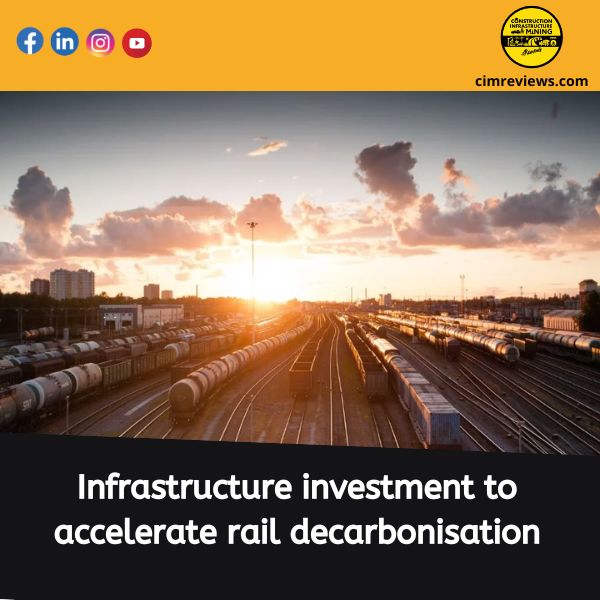In order for the rail industry to achieve decarbonization, technology provider ABB feels that a localised, individualised strategy is the best course of action. Therefore, depending on which rail network is being constructed, investment decisions should be taken about the infrastructure for train electrification.
ABB describes how it maximises the advantages of electrification, the significance of low-carbon technologies, and its efforts to upgrade the Metro Trains Melbourne Hurstbridge Line in addition to taking this viewpoint into account.
Jasleen Mann discusses the prospects for decarbonization in the rail industry with Antonio Colla, worldwide railway marketing & sales manager at ABB. Decarbonizing the rail sector is a critical component of global efforts to reduce greenhouse gas emissions and combat climate change. Achieving this goal necessitates substantial infrastructure investment and strategic long-term planning. This article explores the multifaceted approach required to accelerate rail decarbonization, focusing on electrification, alternative fuels, technological innovation, and policy support.
Electrification of Rail Networks
Electrification stands as a primary strategy for reducing emissions in the rail industry. Transitioning from diesel-powered locomotives to electric ones can significantly lower operational emissions. However, the process involves considerable infrastructure investments, including the installation of overhead lines, substations, and the procurement of electric rolling stock. The carbon payback period—the time required to offset the emissions generated during infrastructure development—must be carefully evaluated to ensure long-term environmental benefits.
Exploration of Alternative Fuels
In regions where electrification is not economically viable, alternative fuels such as hydrogen and battery-electric systems offer promising pathways to decarbonization. Implementing these technologies requires the development of new infrastructure, including hydrogen production and refueling stations or battery charging facilities. Federal programs, like those funded by the Infrastructure Investment and Jobs Act of 2021 in the United States, are beginning to support the deployment of such infrastructure, although historically, funding has been more focused on highway applications.
Technological Innovation and Efficiency
Advancements in technology play a pivotal role in reducing the carbon footprint of rail operations. Innovations such as regenerative braking, energy-efficient train designs, and the integration of renewable energy sources into rail infrastructure can lead to substantial emissions reductions. Companies like ABB are actively involved in upgrading rail lines with low-carbon technologies, exemplified by their work on Melbourne’s Hurstbridge Line, which aims to enhance the sustainability of rail operations.
Policy Support and Strategic Planning
Government policies and strategic planning are essential to drive the decarbonization agenda. Comprehensive plans, such as the All-Island Strategic Rail Review in Ireland, propose extensive enhancements to rail networks with a focus on sustainability and efficiency. This €37 billion plan includes new routes and direct airport links, aiming to modernize the rail system and reduce emissions over the next 25 years.
Economic Considerations
While the environmental benefits of rail decarbonization are clear, understanding the total economic cost is crucial for informed decision-making. Traditional Total Cost of Ownership (TCO) assessments may overlook societal costs associated with emissions and environmental degradation. A more holistic approach considers these externalities, ensuring that investments in decarbonization are both environmentally and economically sound.
Global Collaborative Efforts
International collaboration enhances the effectiveness of decarbonization strategies. Workshops and research endeavors, such as those hosted by the Federal Railroad Administration, bring together global experts to share knowledge and develop innovative solutions for rail decarbonization. These collaborative efforts facilitate the exchange of best practices and the development of standardized approaches to reducing emissions in the rail sector.
Accelerating rail decarbonization requires a multifaceted approach that combines infrastructure investment, technological innovation, supportive policies, and international collaboration. By prioritizing these areas, the rail industry can significantly reduce its carbon footprint, contributing to broader climate goals and promoting sustainable transportation solutions.
Group Media Publication
Construction, Infrastructure and Mining
General News Platforms – IHTLive.com
Entertainment News Platforms – https://anyflix.in/
Legal and Laws News Platforms – https://legalmatters.in/
Podcast Platforms – https://anyfm.in/





